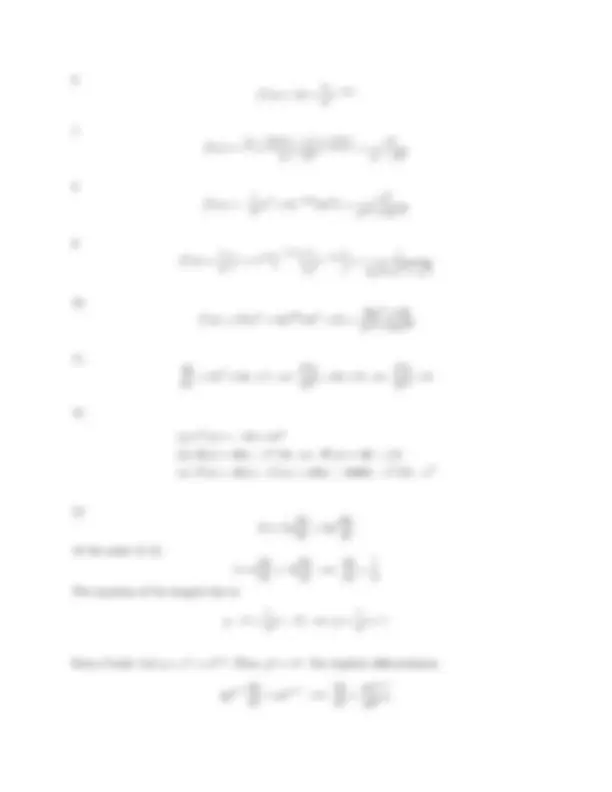




Study with the several resources on Docsity

Earn points by helping other students or get them with a premium plan


Prepare for your exams
Study with the several resources on Docsity

Earn points to download
Earn points by helping other students or get them with a premium plan
Community
Ask the community for help and clear up your study doubts
Discover the best universities in your country according to Docsity users
Free resources
Download our free guides on studying techniques, anxiety management strategies, and thesis advice from Docsity tutors
The solutions to test 2 of math 160 for the harvey fall 2005 semester. It includes the derivatives and simplifications of various functions, as well as the equation of the tangent line at a given point and an extra credit problem involving implicit differentiation.
Typology: Exams
1 / 4

This page cannot be seen from the preview
Don't miss anything!



Math 160. Test 2. (Harvey Fall 2005)
Name:
No notes or texts allowed. You may use a TI-83, TI-84, TI-86 or equivalent calculator. Show all work.
1-10. (7 points each) Compute the derivative and simplify.
f (x) = x
4 x − 2
f (x) = (x^2 + 4x + 5)(2x − 1)
f (x) = x x^2 − 1
f (x) = (^) (x (^3) + 2^1 x + 1) 4
f (x) = 4
x^3 + x + 1
f (x) = x^2 + 5
x^3
f (x) = x^ + 1 x − 2
f (x) = √ 3 1 x^3 + 8
f (x) =
x
f (x) = (x^4 + 3x)^21
11 (10 points). Compute d
(^3) y dx^3 for the function: y = x^3 + 3x^2 + 5x + 1
12 (10 points). The cost of manufacturing a particular product is given by the function
C(x) = 1000 − 45 x + x^3
The projected price-demand equation is
p(x) = 60 − x 10
(a) What is the marginal cost? (b) What is the marginal revenue? (c) What is the profit?
13 (10 points). Find the equation of the tangent line at the point (2, 2) to the curve:
x^2 + y^2 = y^3
Extra credit (5 points). We have seen, using the definition of the derivative, that (^) dxd (xn) = nxn−^1 for any integer n (except 0). Use implicit differentiation to show that this formula is true for any rational number n = p/q as well.
solutions
f ′(x) = x · 1 2
(4x − 2)−^1 /^2 · 4 + (4x − 2)^1 /^2
= √^2 x 4 x − 2
4 x − 2 =^2 x √^ + 4x^ −^2 4 x − 2
= √^6 x^ −^2 4 x − 2
f ′(x) = (x^2 + 4x + 5)(2) + (2x − 1)(2x + 4) = 2x^2 + 8x + 10 + 4x^2 + 6x − 4 = 6x^2 + 14x + 6
f ′(x) = (x
(^2) − 1) − x(2x) (x^2 − 1)^2
= −^1 −^ x
2 (x^2 − 1)^2
f ′(x) = −4(x^3 + 2x + 1)−^5 (3x^2 + 2) = −^12 x
(x^3 + 2x + 1)^5
f ′(x) =
4 (x
(^3) + x + 1)− 3 / (^4) (3x (^2) + 1) = 3 x^2 + 1 4(x^3 + x + 1)^3 /^4
Now plug back in for y and the rest is just simplification:
dy dx =^
pxp−^1 q
x
pq^ )q−^1 =^
pxp−^1 qx
pq−qp
= pq
x(p−1)−^
pqq−p^ ) = pq x
pqq− q− pqq−p
= p q
x
p−q q = p q
x
pq − 1 = nxn−^1